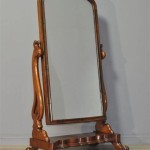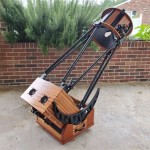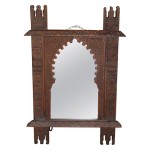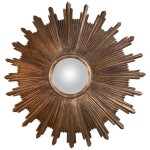Is a Rear View Mirror Concave or Convex?
The rearview mirror inside a vehicle and the side-view mirrors serve distinct purposes, and this difference in function dictates their shape and, consequently, the type of mirror employed. Understanding the properties of concave and convex mirrors is crucial to understanding why one type is chosen over the other for these specific applications.
A concave mirror curves inward, like the inside of a bowl. Light rays striking a concave mirror converge, meaning they are reflected towards a single focal point. This convergence magnifies the reflected image, making objects appear larger than they are. The degree of magnification depends on the curvature of the mirror and the distance of the object from the mirror.
A convex mirror, on the other hand, curves outward. Light rays striking a convex mirror diverge, meaning they reflect away from each other. This divergence results in a smaller, virtual image. While the image is diminished in size, a convex mirror provides a wider field of view than a flat or concave mirror.
Passenger-side rearview mirrors are universally convex. The primary reason for this is the wider field of view they provide. This allows the driver to see a larger portion of the area beside and slightly behind the vehicle, minimizing blind spots. The reduced image size is a trade-off for this increased field of view. The phrase "objects in mirror are closer than they appear" is printed on passenger-side mirrors in many regions as a warning to drivers about this distortion. The diminished image allows the driver to see objects within a larger lateral scope, but it also makes them appear further away than they actually are. This notice emphasizes the importance of understanding the effect of the convex mirror on depth perception.
Inside rearview mirrors are typically flat. A flat mirror provides a reflection that is the same size as the object and at the same distance, making it easier for the driver to judge distances and speeds of vehicles behind them. While flat mirrors don't offer the wider field of view of a convex mirror, their accurate representation of size and distance is prioritized for the area directly behind the vehicle.
While less common, some vehicles offer a day/night setting on their inside rearview mirror. In the day setting, the mirror functions as a standard flat mirror. In the night setting, the mirror angle is adjusted to reflect light from a secondary, dimmed surface. This reduces glare from headlights of trailing vehicles at night, enhancing driver visibility and safety. This functionality does not change the fundamental flat nature of the mirror; it simply alters the light source being reflected to the driver.
Some specialist vehicles may utilize concave mirrors for specific purposes. For instance, some trucks or buses employ large, adjustable concave mirrors to monitor the area directly behind the vehicle, useful for maneuvering in tight spaces or when backing up. The magnified image provided by the concave mirror allows for closer inspection of the immediate area, although this comes at the cost of a significantly narrowed field of view. This specialized use reinforces the principle that the choice between concave and convex mirrors depends entirely on the specific application and the prioritized viewing requirements.
The use of convex mirrors for passenger-side rearview mirrors is a deliberate design choice based on the need for a wider field of view. While the resulting image is smaller and appears further away than reality, the enhanced awareness of the surrounding area contributes significantly to road safety. The use of predominantly flat mirrors for inside rearview mirrors highlights the importance of accurate size and distance perception for the area directly behind the vehicle. The choice of mirror type is a direct consequence of the specific visual requirements in each situation.
The laws regarding rearview mirrors vary by jurisdiction. Some regions mandate specific mirror types or minimum fields of view for certain vehicle classes. Drivers should consult local regulations to ensure their vehicle complies with all applicable laws regarding rearview mirrors. This ensures not only legal compliance but also maximizes visibility and safety on the road.
The distinction between concave and convex mirrors, and their respective properties, is fundamental to understanding why each type is used in specific automotive applications. The wider field of view offered by convex mirrors, despite the image distortion, is prioritized for side-view mirrors to enhance peripheral vision. Flat mirrors, with their accurate representation of size and distance, are generally preferred for the inside rearview mirror to assist in judging the speed and distance of trailing vehicles. This tailored approach to mirror selection reflects a careful balancing of various factors to optimize driver visibility and safety.
Understanding the function and properties of different mirror types empowers drivers to utilize their rearview and side-view mirrors effectively. Regular adjustment and proper use of these mirrors are crucial for safe driving practices and contribute to a comprehensive understanding of the surrounding traffic environment.

Convex And Concave Mirrors In Cars
In Trucks Cars Buses Side View Mirrors Are Convex But Center Rear Mirror Is Or Plane Quora

Concave Vs Convex Mirrors In Cars

Convex Concave Mirror Car Motorcycle Rear View Glass China Silver Made In Com

Side View Mirror Wikipedia

Which Mirror Is Used For Rear View Image And Why Describe With Ray Diagram Edurev Class 10 Question

Why Do We Prefer Convex Mirror As A Rear View In Vehicles Class 10 Ch Light Physics
Why Does The Car Side Mirror Display Objects Appear Further Than They Are Not Just Make As Quora

What Are Safety Mirrors And Which Factors Should Be Considered Before One
Why Are Side View Mirrors Flat On The Driver But Convex Passenger Quora








